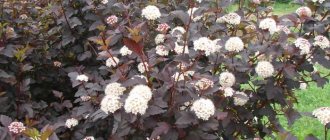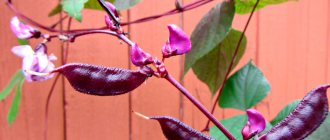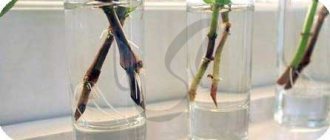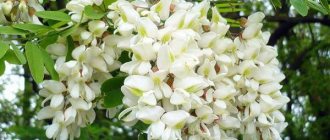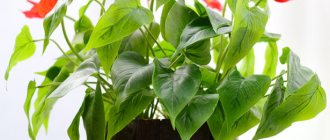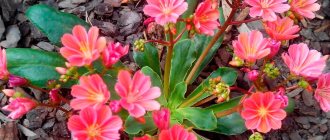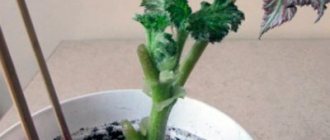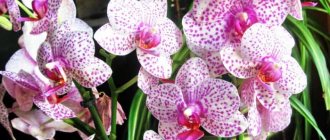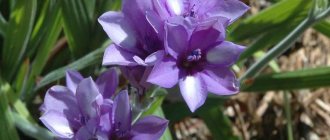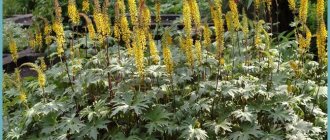Eremurus or Shiryash is a perennial plant that belongs to the Asphodelaceae subfamily of the Xanthorrhoeaceae family. The genus contains about 60 species. Translated from Latin, the name of the perennial means “Desert Tail”.
“Shirish, shiryash or shrysh” were assigned for the ability of the roots of some eremurus to produce gum arabic glue. The plant was first described in 1773 by the Russian explorer and traveler P. Pallas. The first hybrids were bred at the beginning of the twentieth century and work is still underway to propagate varieties of this plant.
Planting a plant
According to the advice of experienced gardeners, it is better to plant eremurus in early autumn, choosing a place illuminated by the sun, with good drainage, fertile neutral or slightly acidic soil, protected from wind blowing. There are species of these perennial plants - Eremurus milky-flowering and Altai, for example, that feel great even on clay if you add some kind of baking powder to it. What is definitely not suitable for all varieties and species is planting in an area with high groundwater.
It is very important to properly prepare the soil mixture for Eremurus
Experts recommend:
- When preparing a bed for eremurus, pebbles or gravel are placed at its base, and on top is a layer of soil mixture 0.2 to 0.4 m thick. The ideal soil is turf, greenhouse soil with the addition of compost or humus, small pebbles and coarse sand.
- In order to plant Eremurus, dig a hole 10 to 15 cm deep, with such a diameter that the roots are completely straightened. Plant plants at a distance of 0.3-0.6 m from one another. This parameter depends on the height of the flower, and it ranges from 0.8 to 2.5 m.
Scheme: rules for planting Eremurus
- When purchasing planting material, you should carefully inspect it. Cornedone is usually purchased dried. There should be several buds on it. If the roots are completely broken off, then it is better not to take such a bottom, it will still not give new roots and will die in open ground. It is normal when only the thin ends of the roots are removed.
- Before planting, place the cornedone in a pink solution of potassium permanganate for 2 hours.
Attention! When planting a plant in the soil, make sure that its top rises above the ground by at least 10 cm, but not more than 15 cm.
Popular types of flower
There are quite a large number of colors, but we suggest considering the most popular:
Eremurus robustus
The culture is distinguished by thickened spindle-shaped roots of a brown hue. The leaf blades have a rich green color, complemented by a bluish bloom with a slight roughness. The inflorescence is cylindrical in shape, its height is up to 120 cm, the flowers are usually white or light pink.
Eremurus Olgae
It is considered the most common type. The height of the bush sometimes reaches up to 150 cm, the rhizomes are thickened and cylindrical. The leaf blades are rich green in color, with pubescence. The diameter of the flowers is up to 3.5 cm, they have a faint pink or whitish color. Flowering can occur in either May or August, depending on the region.
Plant care
Eremurus in its homeland lives in arid areas. Therefore, maintenance in the form of frequent watering is not required. A mature plant has thick roots; they accumulate nutrients, which allows Eremurus not only to survive, but also to develop even in sandy desert conditions. Moreover, planting and caring for eremurus at home involves monitoring the condition of the soil, it should be covered with a film when there are prolonged rains to avoid excessive waterlogging.
Protect the plant from overwatering
The plant awakens after winter very early and blooms in June. First, flowers appear from the bottom of the spikelet, then gradually open further, moving upward. And now the entire “candle” is blazing with a yellow, white or pink flame. You can admire the color for about 2 weeks, with the lower small flowers drying out first. After flowering, the seeds begin to ripen, and gradually the above-ground part dies off completely. During this period, if there is a lot of moisture, the flower may die.
In order not to worry about the wintering of Cleopatra's arrows, you should play it safe and cover the perennials with spruce branches, compost or peat.
Attention! During heavy rain, the peduncle fills with water and can break under this weight, especially if the rain is accompanied by a strong wind. To avoid this, tie the plant to a support.
Shiryash - description of culture
Shiryash is a perennial crop from the Xanthorrhoeaceae family. There are about 40 species and hybrid varieties of the plant. Its natural habitat is steppes, sandy and clayey plains, and mountainous areas. Most often, shiryash can be found in Central Asia, in the southeastern part of the European Plain.
Externally, the plant is a tall, up to two meters high, leafless stem, rising majestically from a rosette of long narrow leaves. At the top of the stem there is a powerful elongated inflorescence in the form of a candle or an erect brush. The length of the inflorescence can reach up to 1 meter. The brush is densely dotted with small flowers arranged in a spiral, each on its own peduncle. The color of the petals can be white, yellow, pale orange, reddish and even brown. At the beginning of flowering, the lower rows of the peduncle open, and then, gradually rising upward, the entire brush blooms. Eremurus begins to bloom at the beginning of summer, continuing to open buds for 2 weeks.
Thanks to the sophisticated fluffy inflorescence-brush, the plant was named. The exotic name “eremurus” comes from the merger of two Greek words and means “desert and tail.” And the name shiryash or shrysh means “glue”, since technical glue is produced from its powerful rhizome.
The rhizome of the plant resembles a disk with a diameter of up to 15 cm, from which large and thick horizontal spindle-shaped roots, up to 15 cm long, extend. The massive root penetrates deep into the soil, supplying the tall plant with nutrients.
The fruit of the shiryash is an oval-shaped capsule, which, when opened, forms three valves. Inside the round box are small seeds with a transparent flap. Shiryash is an excellent honey plant and attracts insects and bees with its fragrant aroma.
Fertilizing and feeding the plant
In order for eremurus to bloom magnificently every year, they need to be fertilized and fed:
Be sure to feed the plant with the onset of spring
- The first feeding after perennial plants awaken in the spring and begin active growth. Contributed per 1 sq. m approximately 55 g of complex fertilizer plus 7.5 kg of rotted manure for the same area. If there is no manure, compost will replace it. You should not increase the dose of fertilizers - the effect will be the opposite - the plant will lose immunity to diseases and reduce its winter hardiness.
- Eremurus are fed the second time at the end of autumn, adding per 1 sq. m of bed on average 35 g of superphosphate.
How to care for Eremurus in the garden
The plant is unpretentious in care.
Watering
From spring to mid-summer, water thoroughly (provided there is no precipitation). There is no need to water after flowering.
After watering or rain, loosen the soil regularly, but do not go too deep to avoid damaging the roots.
Eremurus after the death of the ground part
There is one peculiarity: when the Eremus leaves dry, it is advisable to dig up the rhizome and store it in a ventilated area for about 3 weeks - this way the plant will not suffer from heavy rainfall. Handle the roots carefully. To avoid digging up the rhizome, you can build a rain shelter over the area.
Top dressing
In early spring, apply fertilizing: 40-60 g of complex mineral fertilizer or 5-7 kg of rotted manure per 1 m². Before winter, add 30-40 g of superphosphate per m². If the soil is depleted, before flowering, apply 20 g of ammonium nitrate to the same unit of area.
Reproduction of Eremurus
Eremurus is propagated vegetatively and by seeds. Moreover, it is much easier to do this in the first way.
Vegetative propagation of Eremurus
As soon as the ripe seeds fall, the upper part of the plant dries out. This is the time to start dividing the rhizomes. You can do this in two ways:
Eremurus rhizome
- Dig the underground part in August, carefully separate the newly formed cornedones, send them to a dry and warm place to dry slightly. In September-October they are planted in the garden.
- Dig up the rhizome without removing it from the ground, divide it into 4 parts with a sharp knife. Treat the cuts with crushed coal and cover them again with soil. The following year, the plant forms many new rosettes, which can be separated and planted in the fall.
Growing Eremurus from seeds
Some gardeners, when propagating by seeds, immediately sow them in the ground :
Eremurus seeds
- In August, the flower stalks are cut, laid out under a canopy or in a barn to ripen, and then the seeds are separated and peeled.
- Prepare a bed, make furrows to a depth of about 15 mm and sow seeds.
- When the seedlings appear in the spring, they are looked after - weeded, watered, loosened, fed. Seedlings grow slowly and bloom after 4-5 years.
The second option is to plant seeds in containers . In this case, the sprouted plants are not dug up for 2-3 years, but are dried together with the dishes and only then planted in the soil. Often, as a result of such propagation, specimens of completely different colors appear, unlike the mother plants.
Peculiarities
Eremurus is a perennial herbaceous plant characterized by an attractive appearance. The flower received this name due to the combination of two words in the Greek language, which have such a translation as “tail” and “desert”.
It was the unusual appearance of the flower that led to the name eremurus - tall peduncles in bright colors.
The plant also has other names: shiryash, shrysh, which means glue. The fact is that the roots of this flower were used to create glue - as a result, these names were “attached” to the plant. It should be taken into account that Eremurus roots are also used to make the patch; they are pre-dried and crushed. The roots can be eaten, as well as the leaf blades of certain varieties - after boiling, their taste resembles asparagus. Eremurus can be used to dye natural fibers yellow.
The description of the perennial was first mentioned in 1773 in the notes of P. Pallas, a famous explorer. In the mid-19th century, these flowers began to be grown in Russian botanical gardens, as well as in various countries in Western Europe. Already at the beginning of the 20th century, the first hybrid was obtained. Selection work does not stop today.
The “highlight” of the plant is its unusual root, since it differs from the usual shape - in many ways it resembles a starfish. The cornedone has a disc-shaped shape and a diameter of 13 cm, spindle-shaped or cylindrical roots emerge from it, they are characterized by fleshiness and twisting, directed in different directions. Leaf plates are presented in huge quantities. They are triangular-linear and flat, and can also be either wide or narrow.
The racemose inflorescence deserves special attention. It is quite large, reaching a length of 1 m. The inflorescence is located on a single shoot without leaves. Bell-shaped flowers grow in a spiral. They are presented in various shades. Each bud blooms for about a day, after which it fades. Flower opening begins on the inflorescence from below. Basically, the flowering period can last from 10 to 40 days.
Diseases and pests of Eremurus
Mice and moles pose a great danger to Eremurus. By making tunnels underground, they damage the roots, and some even gnaw the roots, and they begin to rot. If this happens, the plant should be dug up, the diseased areas should be cut off, disinfected with potassium permanganate, sprinkled with ash, dried and lowered back into the ground.
Mice can damage the root system of a plant
Cleopatra's needles and viruses infect. A sign of the disease are pale yellow bumps. Such a plant is simply removed so that the others do not become infected. This often happens due to insufficient care, lack of nutrients, or the wrong place for growing.
Shiryasha Pest Control
Some varieties of shirash are edible and are eaten. The succulent roots are a treat for mice, voles and moles. By gnawing through the rhizome, they create a breeding ground for slugs and woodlice, which cause irreparable harm to the plant. To protect plantings from rodent infestations, use repellers or traps. Roots damaged by rodents must be carefully dug up and sprinkled with ash to avoid rotting.
The above-ground part of the plant is most often attacked by aphids and thrips. Insecticides are used to destroy them. Shiryash also affects viruses, which are caused by improper care of the plant. To avoid complete infection of the plantings, the diseased plant must be destroyed.
Eremurus in landscape design
Eremurus fits fantastically beautifully into landscape design. Its exotic panicles of various varieties and colors - soft pink, fawn, snow-white, red, yellow and orange, rise proudly above the rest of the vegetation and leave no one indifferent.
Eremurus in a common flowerbed
Desert tails, as this name aptly sounds in ancient Greek, look great as tapeworms on alpine hills and lawns, in group plantings, in the background of flower beds. They serve as a bright accent of the flower garden, making the architecture of the site fabulous and unique.
Eremurus: combination with other plants
It is difficult to shade eremurus due to their high growth, so bulbous plants are planted together with them in the flower garden:
- daffodils;
- hazel grouse;
- late tulips.
Eremurus in landscape design
The combination of shirash in landscape design looks harmonious next to bearded irises, other annual and perennial non-aggressive and not very moisture-loving flowers, such as:
- mallow;
- cortaderia;
- yucca;
- cereals.
Perennial eremurus, planting and caring for which are not so difficult, will add a special charm to your garden. And propagating them in open ground will give you a lot of pleasure.
